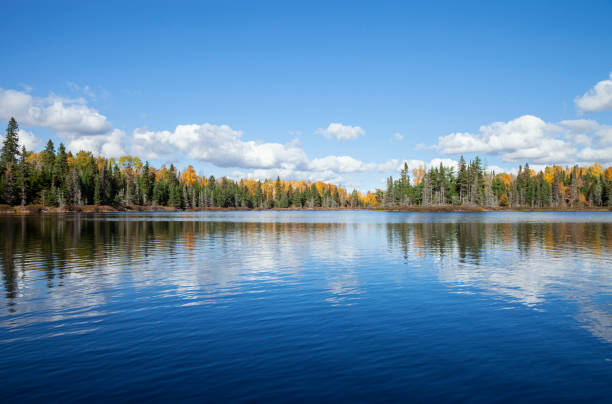

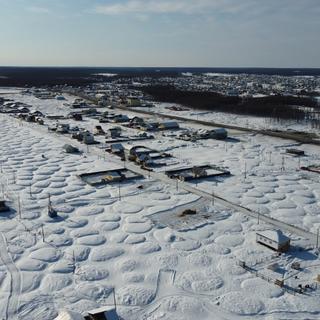
Amid the Siberian winter, strange snow mounds have emerged after the accelerated thawing of permafrost
GalleryThese mounds are not new, but they are multiplying due to climate change and are spreading into cities, threatening some infrastructure.
In the vast whiteness of this part of Siberia, fields are dotted with snow-covered mounds resembling snowy buns, shapes resulting from the increasingly rapid thawing of permafrost that is reshaping the landscape, causing houses to sink and releasing more greenhouse gases.
At the end of March, it was −20°C, and the rural landscape of Yakutia, in the Russian Far East, was saturated with these mounds formed by a process called "thermokarst." The polygons, known as "bylars" in the Yakut language, measure over a meter high and have almost regular shapes.
They are not new, but they are multiplying due to climate change and the accelerated thawing of permafrost − a theoretically perpetually frozen ground, explained Nikita Tananaev, director of the climate laboratory at the North-Eastern Federal University in Yakutsk, the capital of Yakutia, a vast region almost entirely covered by permafrost.
"The top of these formations remains stable. Only the spaces between the mounds sink," he continued. Because the underground ice that melts is arranged in polygons, it is its thawing that creates the mounds. "And with global warming, the ice is melting faster and faster."
The mounds are spreading into cities. In the town of Churapcha, 135 kilometers from Yakutsk, Innokenti Posselski's land had 20 mounds when he bought it last year to build his house. "About 40 years ago, there was an airfield here, and the land was quite flat," he explained. "Over the last 40 years, we've started to see this landscape become hilly. It's like this everywhere here."
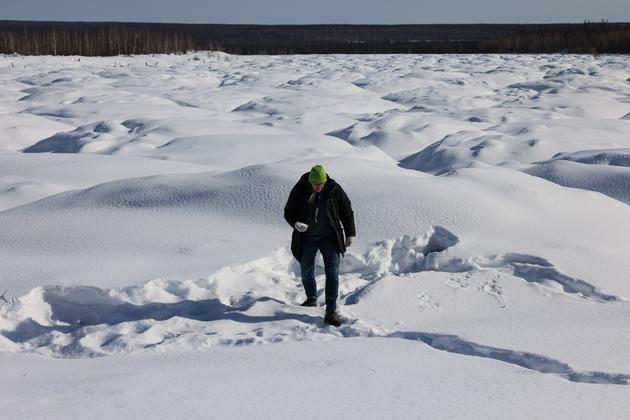
Deformed buildings
The young man has so far leveled only half of his land. His house stands on piles deeply embedded in the permafrost, much like all buildings in the region. In Yakutia, whether residential or commercial, almost all buildings are erected on stakes that go several meters into the frozen ground. But the lasting thaw has already visible consequences: in Yakutsk, the walls of some buildings are sagging and cracking.
Mikhail Kuznetsov, head of the federal agency for the development of the Russian Far East, declared in 2024 that "more than 40%" of the buildings located in permafrost zones – which cover 65% of Russia – were deformed due to the thaw. The blame lies with the increase in average temperatures, which have risen by "1.5°C over the last 30 years" in Yakutia and "even up to 2°C in some places," according to Tananaev of the climate laboratory in Yakutsk.
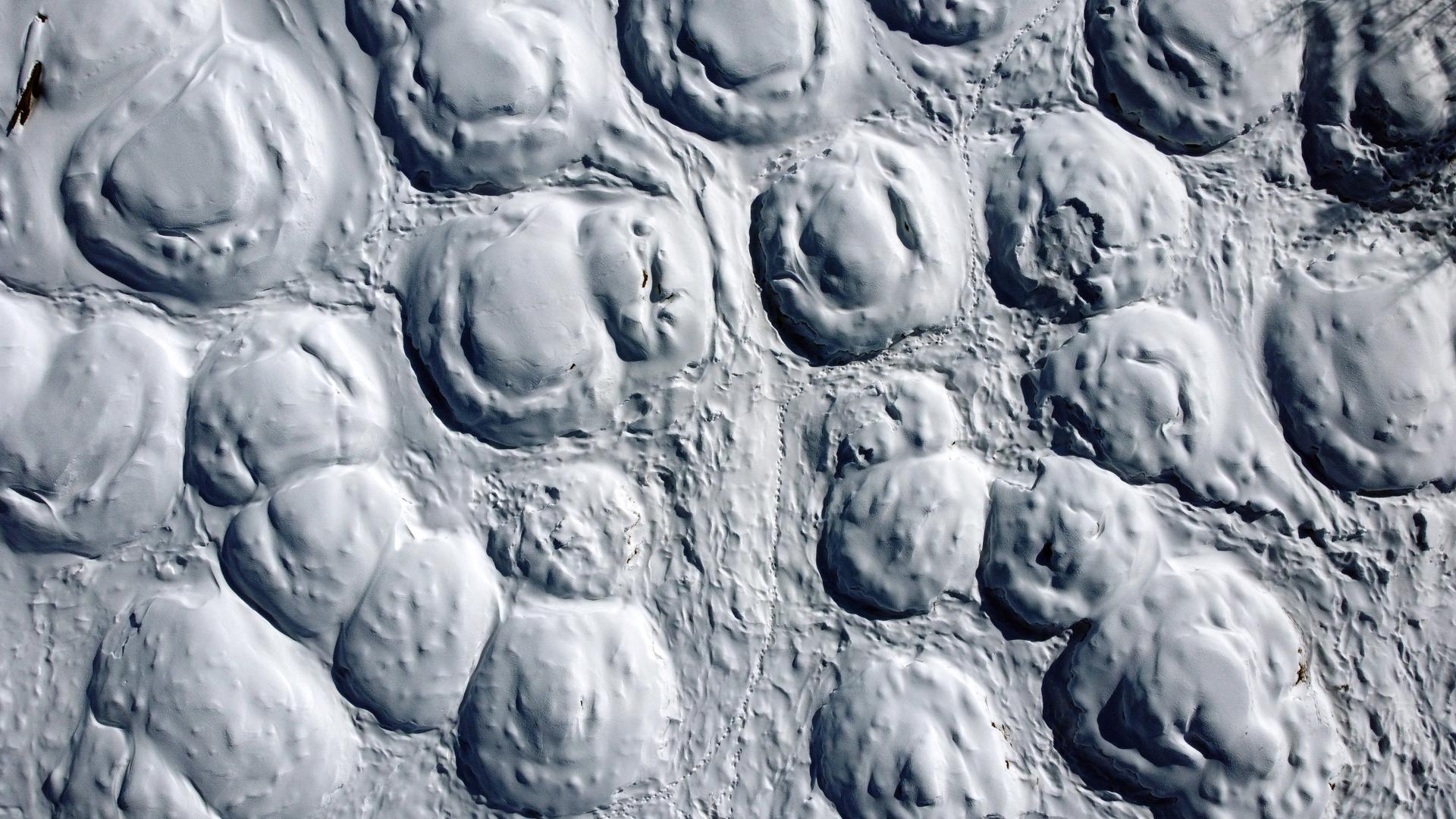
The proof: it was −8°C in January in Yakutsk, "the highest temperature ever recorded" in January in this region where the thermometer usually drops to −40°C during the first month of the year.
These figures reflect global observatory statistics: the last two years – 2023 and 2024 – have been the hottest ever measured, and likely the hottest on Earth in 120,000 years, according to "climate archives" such as ice cores. This warming is largely caused by the burning of fossil fuels, with Russia being the fifth-largest emitter of greenhouse gases globally.
Viruses and bacteria
"A difference of one or two degrees Celsius, even if temperatures are negative, is very significant scientifically because permafrost does not freeze as deeply as usual," explained Alexander Makarov, director of the Arctic and Antarctic Research Institute in Saint Petersburg. To grasp the scale of the problem, the institute has deployed 78 observation wells over the past two years to monitor permafrost thaw in 12 regions of Russia. Eventually, it plans to install 140.
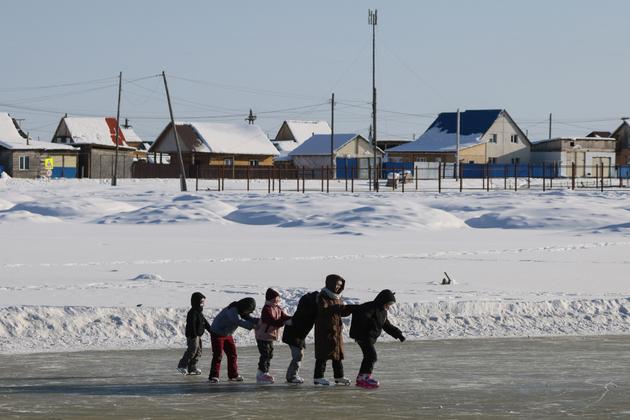
But the thaw also releases more carbon dioxide (CO2) and methane, two greenhouse gases that have been trapped in the ice for millennia. This phenomenon fuels a vicious cycle by worsening global warming, which in turn accelerates permafrost thaw.
Besides its climatic effects, the melting permafrost, which harbors sometimes forgotten bacteria and viruses, poses a health threat. In 2016, a child died in Siberia from anthrax, a disease that had disappeared from the region 75 years ago. Scientists believe the origin likely dates back to the thawing of a reindeer carcass that died of anthrax several decades ago. Once released, the deadly bacteria, which can survive in permafrost for over a century, reinfected herds.
